
5276 people reached on Lassi with Lavina FB page
Jayanthi Martins, Moumita Mondal and 222 others like it on Lassi with Lavina
Rajendran Po, Daphne Muse, Zohra Saed, Maya Jafer and 2 others like it on Lassi with Lavina FB page
457 views on LinkedIn – Gurpreet Kaur likes it.
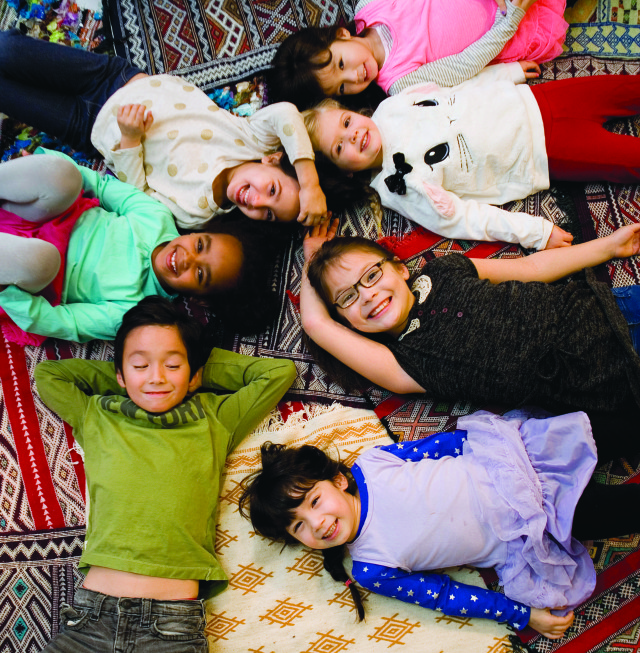
Getting to Know the Muslims Next Door
[dropcap]2017 [/dropcap]has been a rough year for everyone but in the changed insular political climate, it’s been particularly rough on immigrants and minorities, especially Muslims. And it’s been toughest on Muslim teens and children who have to defend who they are.
How can a Muslim parent explain to their child about Muslim-bans and terrorist-taunts, and still expect that child to feel validated and have a healthy self-esteem? At the same time, how can children of other faiths learn about the ‘mysterious’ Muslim culture and realize its richness and plus points?
The Islamophobia in America has been trickle-down, going from the top and spreading its tentacles deep through the very fabric of the country. You hear of harsh incidents in big cities and small towns, in schools and college campuses. How does one halt it before it is internalized by masses brainwashed by negative stereotypes?
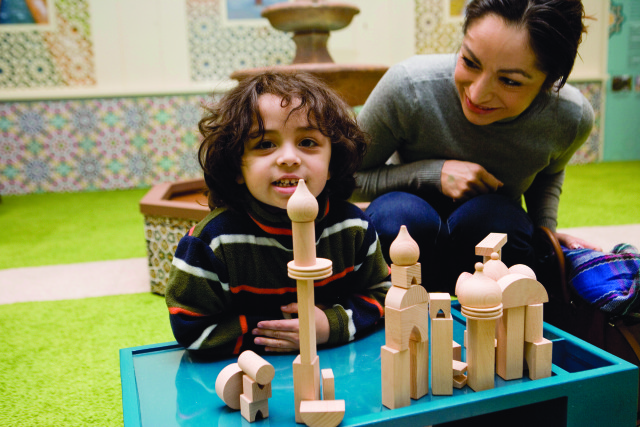
[dropcap]L[/dropcap]iving in New York is a privilege – it is a city which usually gets it right and takes the presence of Lady Liberty on its shores seriously. Yet some people don’t realize that NYC has thousands of Muslims serving as police officers, academics, physicians and in the justice system. They are part of the very fabric of New York City.
In the underbelly of the New York subway system you often get to see heartwarming scenes which show how the city’s diverse population has blended and embraced many cultures. I once saw a bearded Muslim actually handing out Hare Krishna literature! In the token booth, I have had a clerk clad in a black hijab and a big smile – thousands of New Yorkers have bought their transit tickets from her and rushed on as if it was the most natural sight in the world – which actually it is and should be.
So much of the city’s amazing talent – from architects to artists – comes from the city’s Muslims, yet this is rarely acknowledged. Why is ‘terrorist’ the easiest word to taunt a Muslim youth with? The teaching and activity has to start with toddlers before they learn to pick up the adult lingo and become the bullies in the schoolyard and then grow up to be the ones with a myopic world view. How does one do that?
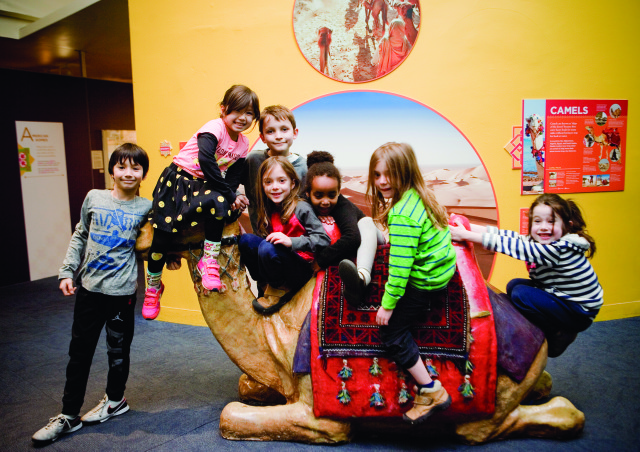
‘America to Zanzibar: Muslim Cultures Near and Far’ at the Children’s Museum of Manhattan.
[dropcap] O[/dropcap]ne of the noteworthy museum endeavors which addresses this issue is ‘America to Zanzibar: Muslim Cultures Near and Far’ at the Children’s Museum of Manhattan.
Indeed, it is one of the hidden treasures and pleasures of New York. The 3,000-square-foot exhibit is the fourth in the Museum’s Global Cultural Exhibition Series, following exhibits about the cultures of Ancient Greece, China, and Japan, dedicated to nurturing the next generation of global citizens.
I discovered the show late and I would urge all those with children to catch it before it’s gone. It has already been seen by half a million visitors, and is one of the most popular shows ever hosted by the Museum. It closed on December 31, 2017 and then hit the road as a traveling exhibit, showing in major cultural institutions in three U.S. cities.
[dropcap]F[/dropcap]or those living in other parts of the US, it will be on display at the Creative Discovery Museum in Chattanooga, Tennessee (Feb. 3, 2018 – May 13, 2018), Please Touch Museum in Philadelphia, Pennsylvania (Feb. 2, 2019 – Sept. 2, 2019), and The Muhammad Ali Center in Louisville, Kentucky.
“The beauty and joy of CMOM’s ‘America to Zanzibar’ exhibition is that it allows families to learn about and explore the multidimensional Muslim culture that the late Muhammad Ali embraced for 50 years,” said Donald E. Lassere, president and chief executive officer at the Muhammad Ali Center. “The discovery element of this groundbreaking exhibit fused well with our mission of preserving and sharing Muhammad’s legacy; promoting respect, hope, and understanding; and inspiring adults and children to be as great as they can be.”
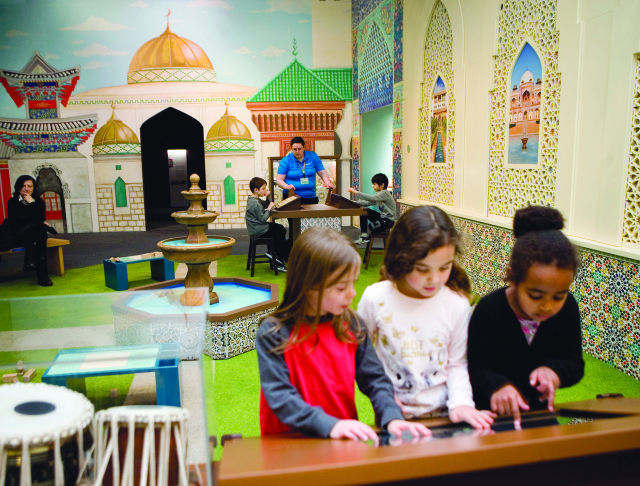
[dropcap]‘A[/dropcap]merica to Zanzibar: Muslim Cultures Near and Far’ showcases the complex beauty of the Muslim culture and its many riches. It is the heritage of so many Muslim communities in NYC and now they can take ownership of it and share it with their friends. According to Lizzy Martin, the Director of Exhibit Development and Museum Planning, and Ellen Bari, Senior Exhibition Consultant, the goal is always to represent cultures so that they are completely authentic, collaborating with research and academic institutions and partnering with national and local government agencies.
Entering the exhibition, you are immediately immersed in the beauty and grandeur of the Muslim culture in an elaborate Islamic courtyard with a Persian style setting, and you see the many instruments which add to the music of the culture. Here families can compose music using an app featuring instruments like the rebana, tabla, kora, oud, ney, and ghijak, listen to stories and view objects shared by local American Muslim families.
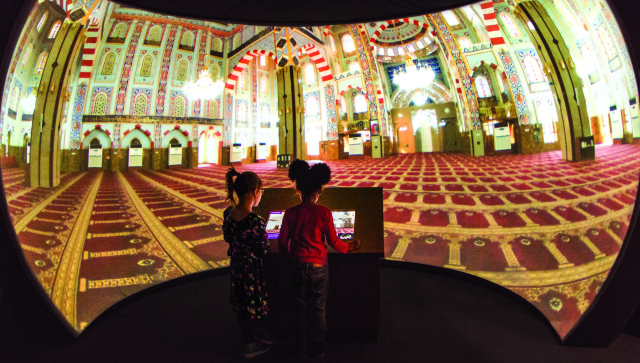
[dropcap]W[/dropcap]ithin the Islamic culture there is great diversity and children get to interact with a 3D exploration of mosque architecture from around the globe. They can take a virtual trip inside some of the world’s most magnificent mosques as well as mosques right in their New York neighborhoods. Young children can have fun with this and college students can take the visit to a whole different level, uncovering the beauty and variety in Muslim architectural design. For those who might pass a mosque as a strange building in a familiar city, there is actually an interactive display of 30 mosques in 30 days. One surprising entry is not even a mosque but a gas station since Muslims must keep their tryst with God five times a day.
In fact I myself have stood at an unmanned falafel cart while the vendor said his prayers on a small piece of carpet right on the pavement, surrounded by frenetic Manhattan traffic. There are so many ways to pray in a crowded city and many of the taxi driver haunts in Curry Hill have a small carpeted space at the back for drivers to pray between ferrying passengers around Manhattan.
Religion can be a uniter or a divider and there are so many blended families in Manhattan which hope to bring both faiths and family together in a sharply divided world. Anu Seghal of The Culture Tree is of mixed Hindu Muslim parentage, and is a strong believer in sharing cultures. At the Children’s Museum she has consulted on both Diwali and Id Festivals, bringing the festivity and color of each event to diverse children.
.
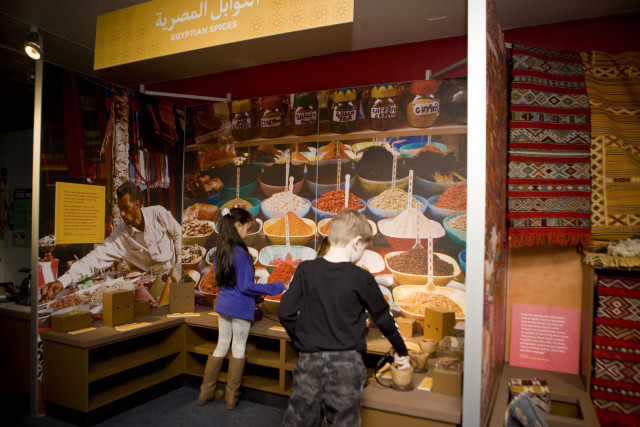
The [dropcap]I[/dropcap]slamic culture with its varied mosques, architecture, music, spices and fabrics across so many centuries is highlighted . There is also information about the Muslim contributions to the global marketplace with interactive activities where the kids can handle spice, fish, fruits and ceramics. They can play act at buying and selling rugs and designing outfits in colorful fabrics. They can handle Turkish tiles and touch and smell fragrant spices from India to Indonesia.
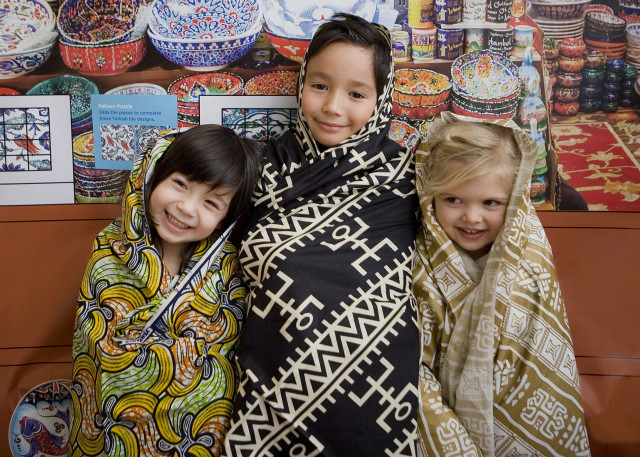
En [dropcap]C[/dropcap]hildren learn best by doing and the museum offers art and design workshops where they can design textiles inspired by Moroccan rugs, create NYC/Senegalese-inspired fashions, paint delicate patterns and floral motifs inspired by Turkish ceramics and even decorate a colorful Pakistani truck with paintings, calligraphy, bells and mirrors.
One of the popular features is one where children learn to write and say “My name is –“ interactively in 21 languages spoken and written by Muslim New Yorkers, including Hindi, Urdu and Arabic. They can then trace the calligraphy of their names and make it totally their own. In this case, familiarity breeds not contempt – but camaraderie and almost a loving sense of ownership, of being part of a larger family.
[dropcap]F[/dropcap]or children this exhibition is a peek into local lives because the organizers have taken pains to use local merchants, artists and musicians – making it really about neighbors and a familiar place where strangers become friends. Original works by emerging American Muslim artists join traditional art forms including intricately designed tiles, ornate ceramics, and complex patterned rugs.
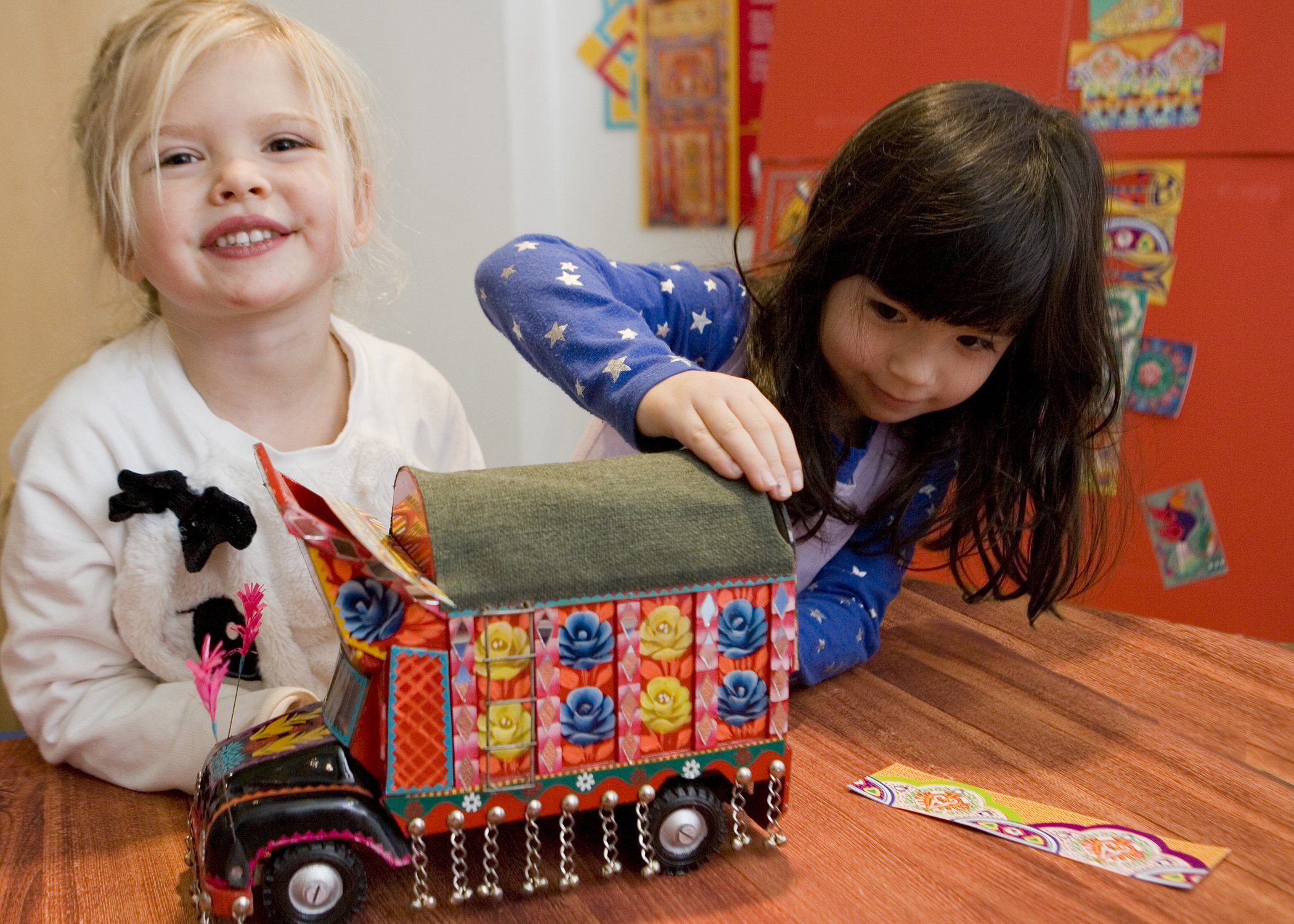
[dropcap]I[/dropcap]f a toddler of any background has just painted art on a Pakistani truck, played with Indian drums or handled Moroccan spices, surely their world gets more open and less vulnerable to bigoted thinking. Different cultures, different faiths and different colors become the new norm, a part of their expanding world. The thousands of parents who annually bring their children to such a museum get a lesson in diversity and humanism too, shared simply and beautifully, without adult jargon.
It’s all about shrinking the globe and embracing the universal strands in each culture so that Muslim bans or any other bans become unacceptable and regarded as an assault on every one of us.
More details at www.cmom.org

1 Comment
Maya Jafer via Facebook
Really awesome 😊❤️